|
NEWSLETTER / NOVEMBER 2023
Green Infrastructure: Coming to a Street Near You
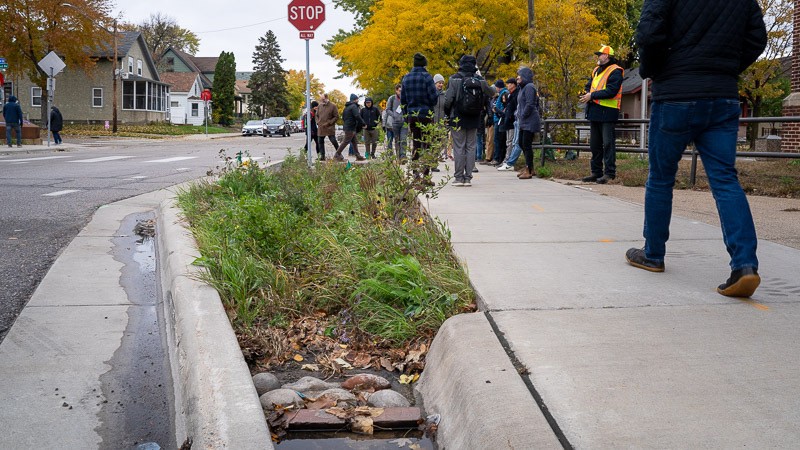 Imagine raingardens in every boulevard.
That’s a simplified version of how cities are using Green Stormwater Infrastructure (GSI), a set of landscape practices designed to manage stormwater and maximize habitat in public spaces.
Cities are increasingly redesigning streets to include GSI that captures and cleans dirty runoff from streets and sidewalks. They’re also trading traditional turfgrass lawns for a variety of native plants that maximize habitat for bees, butterflies, and other wildlife.
The MWMO helped pioneer GSI locally by funding pilot projects like the Hoyer Heights Tree Trenches, the Eighth Street Stormwater Planters and Fridley’s bioswale bumpouts. These projects were considered groundbreaking at the time; now, they’re becoming the norm.
- The MWMO just awarded three new grants for GSI projects in Minneapolis. These complement ongoing GSI projects on Minnehaha Avenue and 37th Avenue NE.
- The City of Minneapolis now requires GSI for some of its street reconstruction projects, thanks to a 2022 city stormwater ordinance update. (See examples.)
Reality Check: Cities’ use of GSI has had growing pains. Residents are often confused about what it does and whose job it is to maintain. And there’s a growing need for workers and contractors who specialize in GSI maintenance.
Big Picture: Change is always messy. GSI is still relatively new, and it will take time to get everything running like clockwork. But it will be worth it in the long run, especially as cities adapt to more extreme weather events caused by climate change.
Rain as a Resource: Metro Transit’s Bus Wash
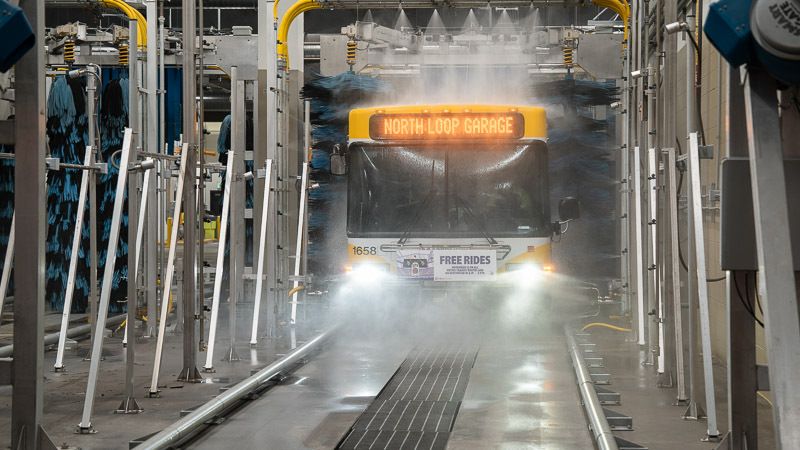 Metro Transit is going the extra mile to reuse its stormwater runoff.
The North Loop Garage is the transit agency’s newest bus garage, opened in March of this year. An MWMO grant funded a stormwater reuse system that takes runoff from the 350,000-square-foot facility’s roof and uses it to wash the buses.
By the Numbers:
- The garage services 132 buses. Nearly all of them are washed every day.
- A ¼” rain event is sufficient to replenish the 40,000-gallon underground cistern.
- The system saves approximately 13,000 gallons per day of potable water.
It’s not the first time Metro Transit has innovated in the field stormwater management. The roof of its light rail facility in St. Paul supplies the stormwater runoff used to irrigate CHS Field. (hat tip: Wes Saunders Pierce)
Other unique MWMO reuse projects include Cemstone, which uses captured stormwater runoff to make cement, and Water Works, NorthPoint, and Westminster Presbyterian Church, all of which use stormwater to flush toilets.
Bonus: Check out this FOX 9 News story on the project.
Where Does All the Salt Come From?
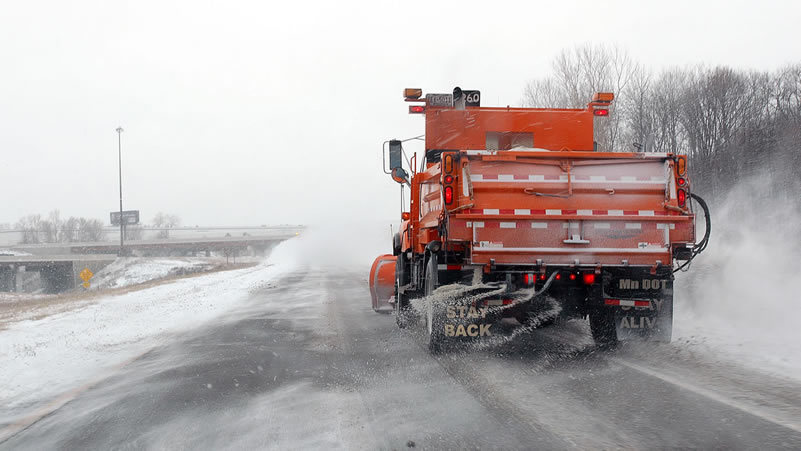 Credit: Minnesota Pollution Control Agency
Salt season (aka “winter”) is nearly upon us.
Chloride has become a major source of water pollution as our public works agencies continue to apply vast amounts of salt products on our roadways. Chloride contamination comes from several sources, but the main driver is road salt.
- Road salt use in the United States skyrocketed from 0.16 tons per year in the 1940s to roughly 20 million tons per year.
Road salt is the largest single contributor to chloride pollution in Minnesota's waterbodies. Public works agencies (cities, counties, and the Minnesota Department of Transportation) account for approximately 76 percent of salt application in the state.
Here’s a breakdown of Minnesota’s largest road salt users:
- Cities — 33 percent
- MnDOT — 23 percent
- Counties — 20 percent
- Commercial — 19 percent
- Packaged* — 5 percent
*Note: "Packaged" salt refers to off-the-shelf deicer products used mainly by individuals and small businesses.
Dig deeper: The Minnesota Statewide Chloride Management Plan contains a wealth of information on the various sources of chloride and strategies to reduce it.
Job Openings
Water Resources and Implementation Specialist
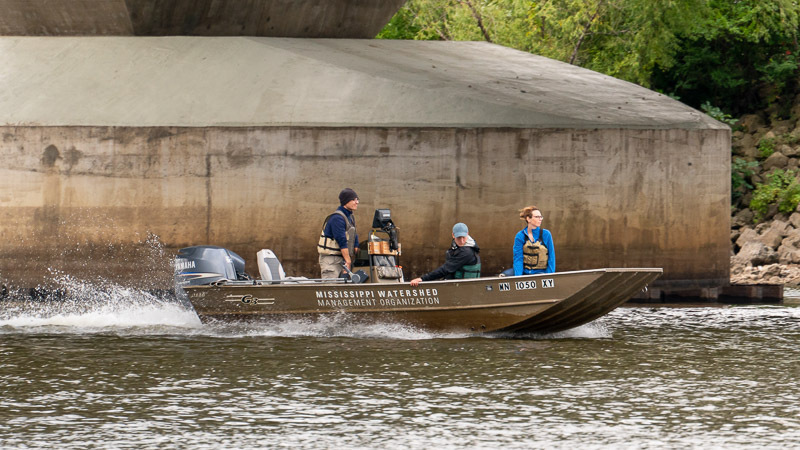 This position is responsible for installing, operating, and maintaining manual and automatic water monitoring equipment and instruments throughout the watershed and performing water quality monitoring field work and data storage.
Come join our monitoring team and help make a difference to the Mississippi River!
Closes: Dec. 1, 2023
Learn More >
Upcoming Events
UPRIVER: A Watershed Film (& Panel Discussion)
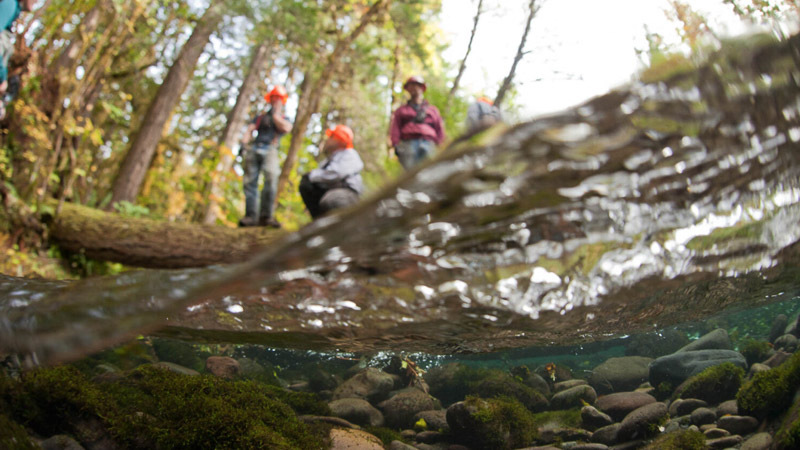 Credit: Freshwaters Illustrated
What: A big-screen showing of UPRIVER, a documentary that explores one of the nation’s most active river conservation movements, with a panel discussion to follow. The event is part of Freshwater’s Moos Family Speaker Series, sponsored by the MWMO and the University of Minnesota’s College of Biological Sciences.
Panelists:
- Jeremy Monroe (Freshwaters Illustrated founder and director of “UPRIVER”)
- Jacques Finlay (professor of ecology, evolution and behavior at the University of Minnesota)
- John Whitehead (Emmy Award-winning documentary filmmaker)
- Patrick Moore (former communications director for Pioneer PBS)
When: Tuesday, Dec. 5. Doors at 6:30 p.m., film at 7 p.m., panel discussion at 8 p.m.
Where: The Main Cinema, 125 SE Main Street, Suite 341, Minneapolis, MN 55414
Learn More >
Upcoming Grant Application Deadlines
Photo of the Month
 The sun rises over the Mississippi River as vehicles cross the Lowry Avenue Bridge into North Minneapolis on Nov. 1, 2023. The MWMO Stormwater Park and Learning Center is visible at far left.
See more great photos on our Flickr photostream.
|